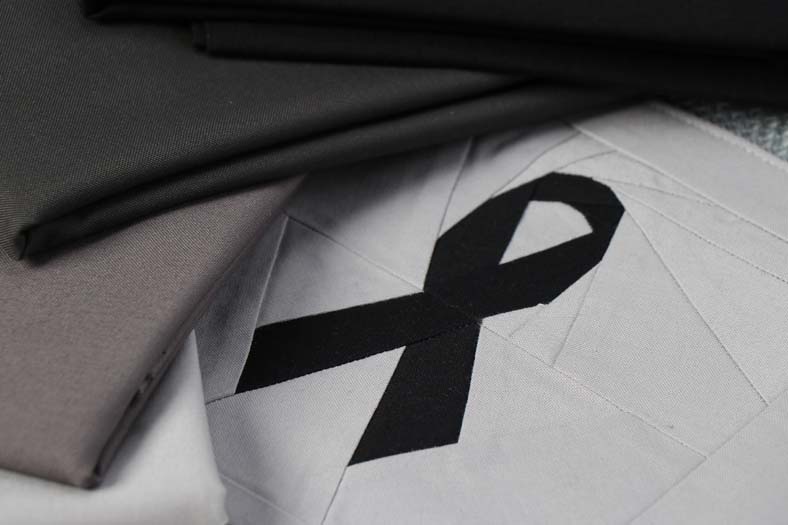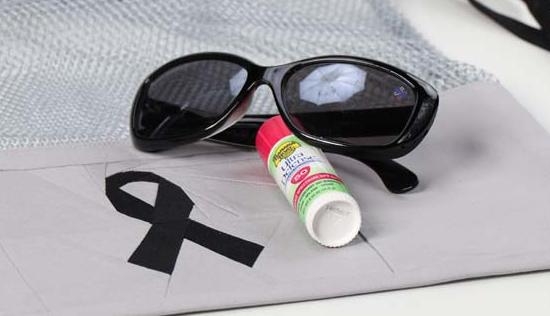As the sun starts shining this May, take the extra time to protect yourself against its potentially harmful rays. Your skin is your largest organ, so treat it to some sunscreen and learn ways to detect melanoma early.
Once you learn the ABCDE method in this blog, you'll be one step closer to early detection!
What Is Melanoma Skin Cancer?
Melanoma is a type of skin cancer that develops when melanocytes — cells that produce the pigment melanin — grow uncontrollably.
Though less common than other skin cancers, melanoma is more dangerous because it is more likely to spread to other parts of the body if not detected and treated early.
“Cancer of the skin is by far the most common of all cancers in the United States.

Melanoma accounts for only about 1% of skin cancers but causes a large majority of skin cancer deaths.” — American Cancer Society

Skin cancers generally begin in the epidermis,
the top layer of the skin.
The three main types of cells in this layer are: squamous cells, basal cells, and melanocytes.
Melanoma often spreads deeper into the skin layers, beyond the basement membrane that separates the epidermis from the dermis.
Types of Melanoma Skin Cancer:
Superficial Spreading Melanoma:
This is the most common type,
making up
about 70% of cases.
It tends to spread outwards on the
skin’s surface and can
appear as
a dark, irregularly shaped spot.
Nodular Melanoma:
This type of skin cancer makes
up about 20% of cases and
appears as
a raised, dark bump, often growing deeper
into the skin quickly.
Lentigo Maligna Melanoma:
Found in older people, this type
grows slowly
and typically appears
as a tan or brown spot, often on
sun-exposed areas like
the face or arms.
Acral Lentiginous Melanoma:
More common in people with darker skin,
this type develops in areas with
less sun exposure, such as the palms,
soles of
the feet, or under the nails.
Melanoma can also develop in areas other than the skin, though these cases are rare.
Risk Factors for Melanoma:
Several factors increase the risk of developing melanoma:
- Sun Exposure: Prolonged or intense UV radiation increases risk.
- Fair Skin: Lighter skin, hair, and eyes are linked to a higher risk.
- Moles: Having many moles or atypical moles increases the risk.
- Family History: A family history of melanoma raises the likelihood of developing skin cancer.
- Weakened Immune System: Those with compromised immune systems are at greater risk.
“The risk of melanoma increases as people age. The average age of people when it is diagnosed is 66. But melanoma is not uncommon even among those younger than 30. In fact, it’s one of the most common cancers in young adults, especially young women.” — American Cancer Society
Preventive Measures:
There are several ways to lower the risk of developing melanoma:

- Seek Shade: Avoid direct sun exposure, especially during peak hours (10 am to 4 pm), when UV rays are strongest.
- Wear Protective Clothing: Clothing like wide-brimmed hats and sunglasses can help protect your skin from harmful UV rays. Choose clothing made from tightly woven fabrics for maximum protection.
- Use Broad-Spectrum Sunscreen: Apply sunscreen with an SPF of 30 or higher, even on cloudy days. Reapply every two hours, and more often if swimming or sweating.
- Avoid Tanning Beds: Tanning beds increase the risk of skin cancer, including melanoma.
- Perform Regular Skin Checks: Self-examine your skin monthly for any changes in existing moles or new growths.
Detecting Melanoma:
Melanoma is often first noticed by changes in moles or the appearance of new
spots. The ABCDE rule can help identify suspicious moles:
Interesting Facts About Melanoma:
Increasing Incidence: Melanoma rates have been rising, especially in areas with high sun exposure.
High Survival Rates with Early Detection: If caught early, melanoma can be highly treatable, with good survival rates.
Affects Both Men and Women: In men, melanoma is more likely to appear on the chest or back, while in women, it’s more common on the legs.

Melanoma Can Occur in Dark Skin: While more common in fair-skinned individuals, melanoma can also develop in those with darker skin, often in areas not exposed to the sun.
Conclusion

Melanoma is a serious form of skin cancer that can spread quickly if not detected early.
Regular skin checks and being aware of changes in moles or skin spots are key to early detection.
With prompt diagnosis and treatment, melanoma can be effectively treated, improving the chances of survival.
If you notice any suspicious changes in your skin, consult a healthcare professional promptly for evaluation.
How to Support
There are countless ways to help support melanoma skin cancer patients. The easiest way is to keep the conversation going. Spread awareness by wearing black ribbons this month, post on social media, and tell others how they can support this cause. Consider making your next sewing project with black fabrics.
If you have the means, donate to trusted organizations that focus on medical research and patient care like the American Cancer Society. (Donate here to have ByAnnie match your donation.) If someone you know is being affected by one of these cancers, consider helping out with daily tasks like meals, childcare, groceries, or rides to appointments.
While cancer is scary, if we stand together as a community to support those fighting battles against cancer, whether it be as a patient, caregiver, or medical professional, we can make the battle a little easier for everyone.
Want to make a project to support melanoma skin cancer awareness? Use the chart below to find solids from your favorite fabric companies.
Find solids for the whole year here.
Disclaimer
Any and all content produced and displayed by ByAnnie.com is for educational and informative purposes only; it should not and does not replace a diagnosis by a medical professional. Statements made by ByAnnie.com are not medical advice. If any questions arise, contact your doctor or other qualified professional. Unless stated otherwise, the opinions and statements made are not by medical professionals. Reliance and usage of ANY information from ByAnnie.com is done solely at your own risk. None of the staff members of ByAnnie are, or claim to be, medical professionals. We urge you to consult with a medical professional to answer any questions or concerns that you may have. Stay healthy, stay safe, and happy stitching!
Resources
American Cancer Society's Melanoma Skin Cancer Page —
https://www.cancer.org/cancer/types/melanoma-skin-cancer.html
National Cancer Institute Recognizing the ABCDE Features Page —
https://moles-melanoma-tool.cancer.gov/#/
#SewPINK: Melanoma Skin Cancer